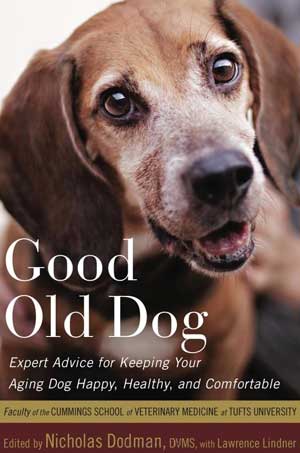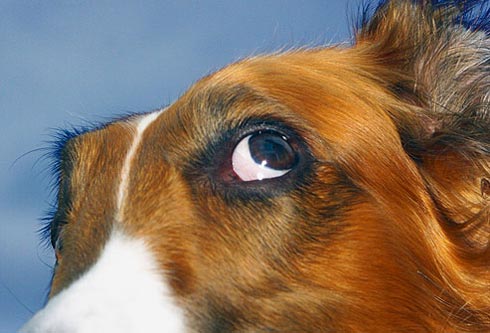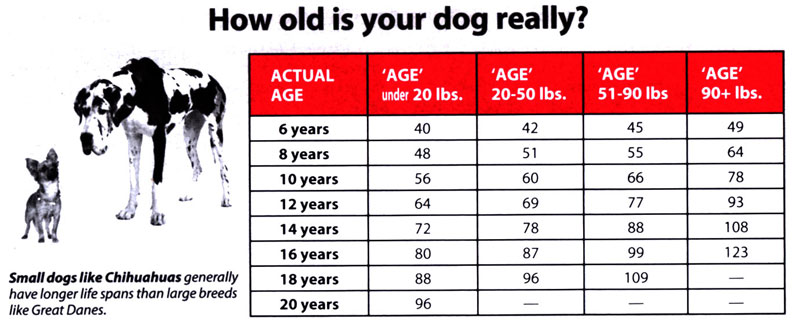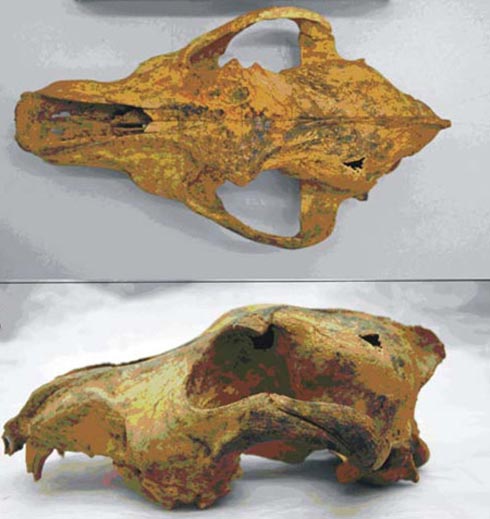The Last Will and Testament of Silverdene Emblem O’Neill by Eugene O’Neill
April 21, 2012
I, SILVERDENE EMBLEM O’NEILL (familiarly known to my family, friends, and acquaintances as Blemie), because the burden of my years and infirmities is heavy upon me, and I realize the end of my life is near, do hereby bury my last will and testament in the mind of my Master. He will not know it is there until after I am dead. Then, remembering me in his loneliness, he will suddenly know of this testament, and I ask him then to inscribe it as a memorial to me.
I have little in the way of material things to leave. Dogs are wiser than men. They do not set great store upon things. They do not waste their days hoarding property. They do not ruin their sleep worrying about how to keep the objects they have, and to obtain the objects they have not. There is nothing of value I have to bequeath except my love and my faith. These I leave to all those who have loved me, to my Master and Mistress, who I know will mourn me most, to Freeman who has been so good to me, to Cyn and Roy and Willie and Naomi and – But if I should list all those who have loved me, it would force my Master to write a book. Perhaps it is vain of me to boast when I am so near death, which returns all beasts and vanities to dust, but I have always been an extremely lovable dog.
I ask my Master and Mistress to remember me always, but not to grieve for me too long. In my life I have tried to be a comfort to them in time of sorrow, and a reason for added joy in their happiness. It is painful for me to think that even in death I should cause them pain. Let them remember that while no dog has ever had a happier life (and this I owe to their love and care for me), now that I have grown blind and deaf and lame, and even my sense of smell fails me so that a rabbit could be right under my nose and I might not know, my pride has sunk to a sick, bewildered humiliation. I feel life is taunting me with having over-lingered my welcome. It is time I said good-bye, before I become too sick a burden on myself and on those who love me. It will be sorrow to leave them, but not a sorrow to die. Dogs do not fear death as men do. We accept it as part of life, not as something alien and terrible which destroys life. What may come after death, who knows? I would like to believe with those of my fellow Dalmatians who are devout Mohammedans, that there is a Paradise where one is always young and full-bladdered; where all the day one dillies and dallies with an amorous multitude of houris, beautifully spotted; where jack rabbits that run fast but not too fast (like the houris) are as the sands of the desert; where each blissful hour is mealtime; where in long evenings there are a million fireplaces with logs forever burning, and one curls oneself up and blinks into the flames and nods and dreams, remembering the old brave days on earth, and the love of one’s Master and Mistress.
I am afraid this is too much for even such a dog as I am to expect. But peace, at least, is certain. Peace and long rest for weary old heart and head and limbs, and eternal sleep in the earth I have loved so well. Perhaps, after all, this is best.
One last request I earnestly make. I have heard my Mistress say, “When Blemie dies we must never have another dog. I love him so much I could never love another one.” Now I would ask her, for love of me, to have another. It would be a poor tribute to my memory never to have a dog again. What I would like to feel is that, having once had me in the family, now she cannot live without a dog! I have never had a narrow jealous spirit. I have always held that most dogs are good (and one cat, the black one I have permitted to share the living room rug during the evenings, whose affection I have tolerated in a kindly spirit, and in rare sentimental moods, even reciprocated a trifle). Some dogs, of course, are better than others. Dalmatians, naturally, as everyone knows, are best. So I suggest a Dalmatian as my successor. He can hardly be as well bred or as well mannered or as distinguished and handsome as I was in my prime. My Master and Mistress must not ask the impossible. But he will do his best, I am sure, and even his inevitable defects will help by comparison to keep my memory green. To him I bequeath my collar and leash and my overcoat and raincoat, made to order in 1929 at Hermes in Paris. He can never wear them with the distinction I did, walking around the Place Vendôme, or later along Park Avenue, all eyes fixed on me in admiration; but again I am sure he will do his utmost not to appear a mere gauche provincial dog. Here on the ranch, he may prove himself quite worthy of comparison, in some respects. He will, I presume, come closer to jack rabbits than I have been able to in recent years. And for all his faults, I hereby wish him the happiness I know will be his in my old home.
One last word of farewell, Dear Master and Mistress. Whenever you visit my grave, say to yourselves with regret but also with happiness in your hearts at the remembrance of my long happy life with you: “Here lies one who loved us and whom we loved.” No matter how deep my sleep I shall hear you, and not all the power of death can keep my spirit from wagging a grateful tail.
Tao House, December 17th, 1940
Great Advances in Veterinary Medicine, But What About the Costs?
April 21, 2012
The New York Times has an excellent piece on new life-saving medical treatments for dogs. You’ll read about Tina, a 10-year-old chow owned by Mike Otworth that was one of the first dogs ever to receive a bone-marrow transplant. The procedure is detailed and makes for fascinating reading (using equipment donated by the Mayo Clinic).
Then there is the price Mr. Otworth paid: $25,000 in total.
No one can argue against the money that was spent to save Tina. That’s a personal choice to be made by each dog owner. But it does raise some troubling questions.
What is the extra time with a companion animal worth? To you and for the dog? Are there some procedures that shouldn’t be performed on aging dogs in the calculation of time gained versus the pain of the operation and recovery time?
In my opinion the last great gift you can give your dog is an easy passage from this life.
The enormous amount of money that’s spent on end of life care for humans doesn’t make sense to me, unless it delivers a good ‘quality of life’ for the patient. All too often, I see elderly people kept alive by medical technology today who, 30 years ago, would’ve died. Their quality of life is terrible. No relatively healthy person would trade places with them. So why artificially extend their suffering?
Does this make me a heartless beast who would ‘pull the plug on Grandma?’ Sure. (I never liked Grandma anyway).
There are two factors that drive this: insurance that covers these expensive treatments and guilt over not doing everything humanly possible for a loved one. We are rushing towards the day when the insurance part of this equation will break down and heroic intervention is simply no longer affordable.
It now looks like we will be facing similar hard choices when it comes to our dogs.
Why Do Dogs Love to Stick their Heads Out of Car Windows?
April 21, 2012
Anyone familiar with the canine nose already knows the answer to this one. It’s not the sights or sounds, it’s the smells.

On average a dog has more than 220 million olfactory receptors compared to the 5 million or so that humans have. They’ve also got something else we don’t have: a chamber called the vomeronasal organ. When a dog sniffs odor molecules accumulate in another unique structure, a sort of nasal pocket created by a bony subethmoidal shelf. This is the structure that allows dogs to compare a scent and then track it.
Their noses are far more acute than their eyes; the opposite is true for humans. So for a dog the appeal of having the air rush through their noses at the speed of a car is a sensory smörgåsbord of every smell in the area, constantly refreshed with new scents as the terrain changes. It’s stimulating to them in a way that is hard to compare to a human’s ability to sense and appreciate pleasant smells.
So, within reason, this is a pleasure you shouldn’t deny your pooch. I don’t allow it on highways, for example, but cruising around town on local roads I’ll always lower a window for my dogs, even in the bitter cold of winter.
New, More Accurate Dog Age Chart from Tufts University
April 20, 2012
It used to be that you multiplied your dog’s age by 7 and came out with a rough equivalent human age. Then this was refined by making the first year of your dog’s life equal 10 human years, the second 8 years and all the rest 7. This certainly seemed appropriate to me as the owner/guardian of two Labrador Retrievers.
At 2 years old they did seem like 18 year-old boys, not quite fully mature but certainly no longer “kids.”
Now the folks at Tufts University who publish the excellent Your Dog newsletter have added an additional factor: your dog’s weight, making this calculation even more accurate (see the chart below). Click image for larger size.
Glucosamine for your Arthritic Dog – What’s the Benefit? from “Good Old Dog”
April 20, 2012
 “Glucosamine. When it comes to glucosamine, a supplement used to quell arthritis pain, the evidence is a little more compelling, with the emphasis on a little. That is, the science showing any benefit is not nearly as strong as word on the street.
“Glucosamine. When it comes to glucosamine, a supplement used to quell arthritis pain, the evidence is a little more compelling, with the emphasis on a little. That is, the science showing any benefit is not nearly as strong as word on the street.
Note that as an ingredient in store-bought food, there will probably never be enough glucosamine to have a therapeutic effect. That’s true even for therapeutic foods you can get only at the doctor’s office. Yes, they are analyzed so that glucosamine levels indicated will be in the food. But most do not reach levels that may have potential therapeutic benefits. Glucosamine must be taken in the form of pills to reach a therapeutic level.
Specifics on choosing glucosamine for an arthritic dog will be addressed in Chapter 4, but be aware that even if you do choose to give your arthritic dog glucosamine supplements, whatever it does for him won’t be a drop in the bucket compared to the benefit of helping him get into optimal body condition, meaning helping him to lose weight if he’s overweight. Lifestyle-wise, that’s the number one thing you can do to lessen an arthritic dog’s pain.”
DogTV: Minimally Useful Cable Programming for Your Pooch
April 20, 2012
Your dog does not want or need this but you can probably be guilted into wasting your money on it.
If you read the article carefully you’ll note the various disclaimers. Remember also that journalists are often shills for marketers (newspapers are, like television stations, primarily advertising delivery systems).
Dogs are not primarily visual creatures, they live in an ocean of smells. As Dr. Nicholas Dodman, Director of the Animal Behavior Clinic at the Cumming School of Veterinary Medicine at Tufts University and celebrated author of many great books on dog care makes clear that the service to add here is smell.
It’s not even proven that dogs can recognize images on digital televisions, as they couldn’t on analog sets previously. Certainly they can hear the content of DogTV. Don’t be fooled into thinking that this service can in any way replace proper socialization for puppies.
The claim that you can prevent rescued dogs from going kennel-crazy with a combination of DogTV a two 20-minute walks a day is an accurate statement. The only problem is that you can eliminate the DogTV and achieve the same result. It’s like saying you can add water to water to make it more watery.
The only aspect of this that can be of any real benefit is the audio component. But dog radio wouldn’t get the marketplace traction that dog TV will.
My opinion? Don’t waste your money and save up to hire a dog walker to take your dog out while you are at work. In the real world. With smells and interaction with actual grass, sidewalks, other people and, hopefully, other real dogs.
Not dogs on a LCD screen.
Dogs Follow Your Expressions at the Level of Human Infants
March 26, 2012
A new study in the science journal Current Biology will not surprise the majority of dog owners. It suggests that dogs can follow our gaze and facial expressions – our communicative intent to interact with them – as well as preverbal human infants. That’s something we see every day in our interactions with our canines, isn’t it? Actually, my Labradors are probably more expert than most babies, but then they have the advantage of years of studying my –ahem– communicative intent.
Still, it’s nice to see that research is beginning to find scientific support for this well-known ability.

“Increasing evidence supports the notion that humans and dogs share some social skills, with dogs’ social-cognitive functioning resembling that of a 6-month to 2-year-old child in many respects,” says study researcher Jozsef Topal of the Hungarian Academy of Sciences. “The utilization of ostensive cues is one of these features: dogs, as well as human infants, are sensitive to cues that signal communicative intent.”
The 7 Most Newsworthy Dogs of 2011
March 26, 2012
The Week pulls together a list of newsworthy dogs from the past year including a dog that demonstrated a vocabulary of 1,022 words, the world’s first prosthetic legged dog (see video below), a guide dog for a former guide dog that lost its sight and the SEAL dog that was part of the mission that killed Osama Bin Laden.
Domestication of Dogs Gets Pushed Back to 33,000 Years Ago?
March 26, 2012
There are many lines of evidence that suggest there was not a single domestication event in the shared history of men and dogs. It most likely happened several times and in several locations. Even the time line for the gradual conversion of the wolf into the dog seems to shift as new evidence arises. An estimate of 12-14,000 years was common in the recent literature but now the discovery of a pair of skulls in Siberia and Belgium could be proof that we need to more than double that figure.
Read the full story here at The Week.
America’s Pet Frenzy: Infographic
January 12, 2012
As a graphic designer I admit to a passion for infographics that may not be shared by others. But this is my bully pulpit, and here is the first of four posts featuring, well, you know. . .click on image for larger size



